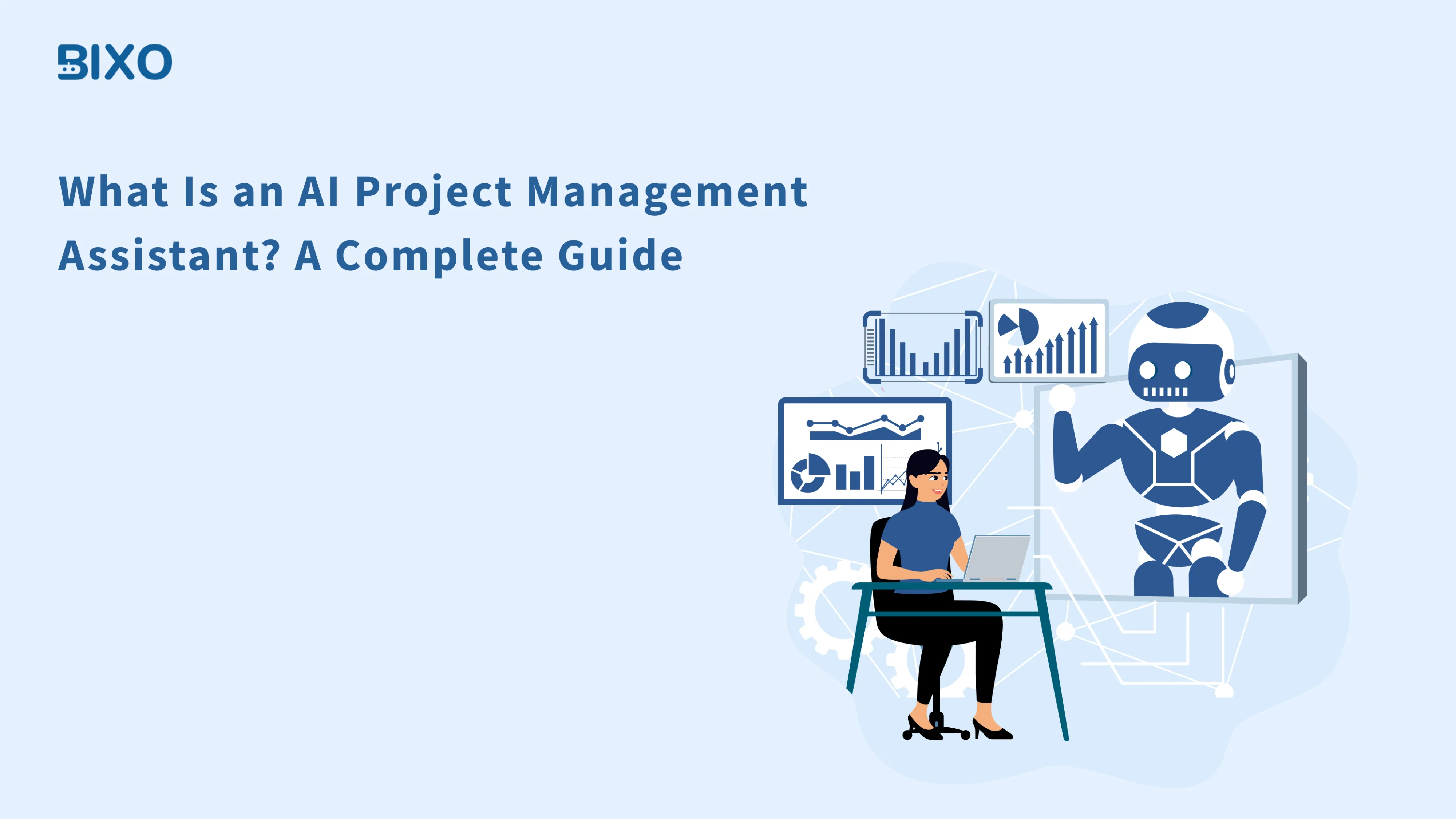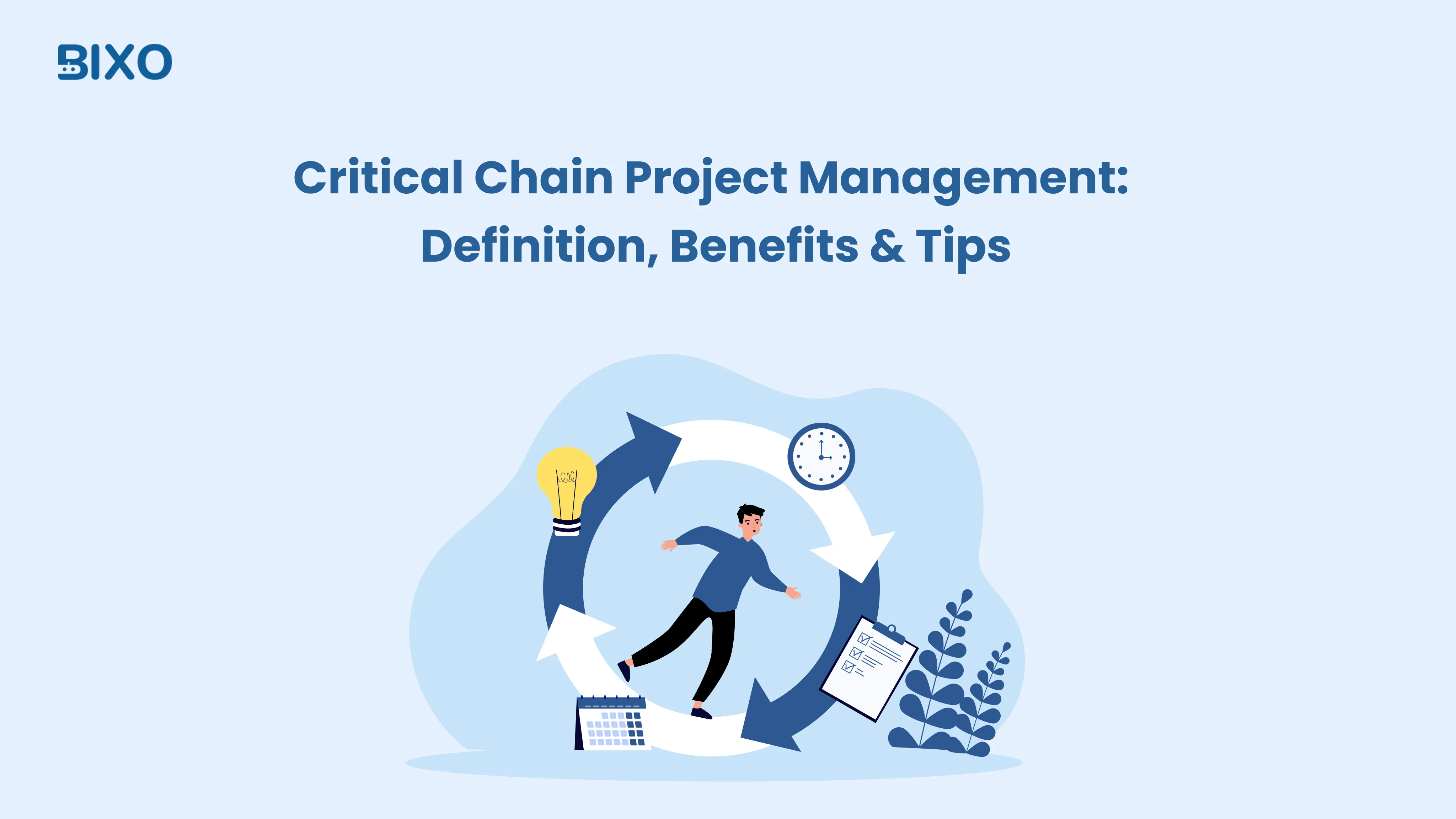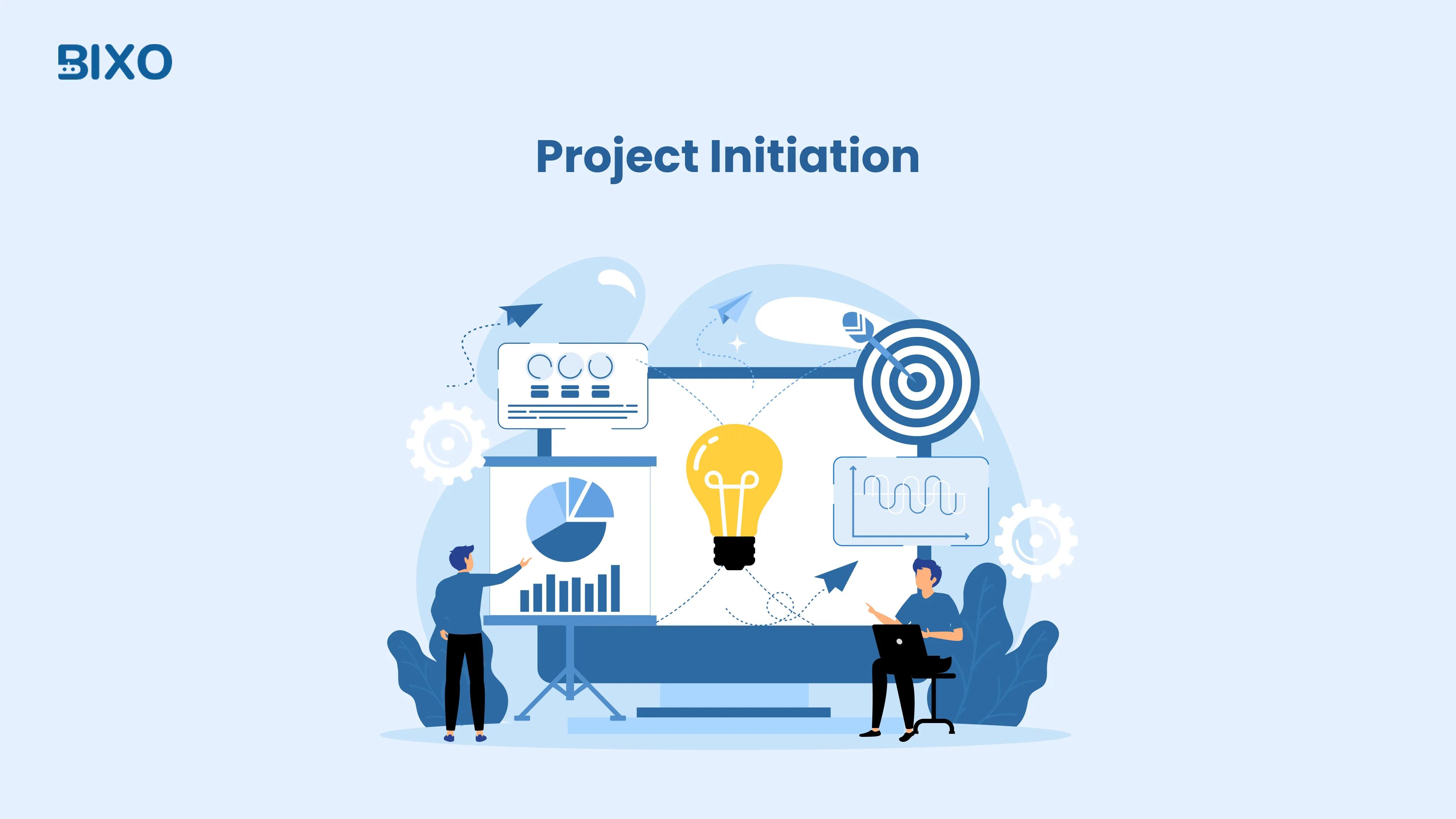
Table of Content
Focus on what matters. BIXO handles the rest!

Starting a project is not simply a matter of getting to work or creating deadlines. The first thing to do is you need to determine why the project is important, what the project is trying to address, and whether it is worth doing at all. Good planning in the project initiation phase helps you avoid wasting time, money, and energy.
From defining clear objectives to identifying risks early, the project management initiation phase gives you the foundation you need to move forward with confidence. This guide helps you understand each step of project initiation clearly, so you can start your projects well and stay on track.
What Is Project Initiation?
Project initiation is the first step when you start any project. This is where you take a basic idea and turn it into a clear plan. You decide what the project is about, what it should achieve, and how you’ll get it done. You also figure out the main project goals, what work needs to be done, what resources are needed, and how much time it might take. This helps everyone understand what to expect before the work begins.
In the project initiation phase, you also find out who should be involved, what problems could come up, and what success should look like. It’s the base that supports the whole project. If you do this part right, the rest of the project is much easier to handle. A strong project management initiation phase helps you stay clear, focused, and ready to move forward with confidence.
Why the Project Initiation Phase Matters
The project initiation phase gives your project a strong and steady start. It helps you confirm the purpose behind the work, define clear goals, and figure out who should be involved. Instead of jumping in blindly, you’re setting up a roadmap that everyone can follow with confidence. Such an initial structure helps to avoid confusion, missed goals, and time wastage in the future.
This step can also assist you in identifying risks, knowing limitations, and making smarter decisions early on. The project management initiation phase gives shape to your ideas and aligns them with real business owners needs. Once you start with clarity, project planning becomes simpler and implementation remains on course. That is why this phase is so crucial.
What Are the Key Steps in the Project Initiation Phase?
The project initiation phase is where you build the foundation for your project. These steps help you plan, set clear goals, and start the project the right way.

Identify the Business Need
Start by asking why the project matters. You're not just picking a task to do. You're responding to a real need in the business or spotting an opportunity to improve, grow, or solve a problem. This step gives your project a clear purpose, which guides every decision that follows in the project initiation phase.
Define Project Objectives and Success Criteria
Once you understand why the project matters, figure out exactly what you want it to achieve. Be clear. Are you planning to launch a new product, fix something that isn’t working well, or make a process faster? You also need to decide how you’ll know if the project is successful. Simple, clear goals help everyone stay on track and see progress as the work moves forward.
Check if the Project is Possible and What Could Go Wrong
Now take a good look at whether the project is possible with the time, money, and people you have. Think about what problems could come up. What could slow things down or cause issues? This step in the project management initiation phase helps you make good choices early and avoid problems later on.
Make a Business Case for the Project
This step is all about explaining why the project is needed. You need to show the value it will bring, like time management, making money, improving how things work, or helping you stay ahead of others. A good idea isn’t enough. It has to be practical. It should fit the budget, support your goals, and work well with how your team or company already operates.
Make the Project Charter
The project charter is the first proper document you create. It explains what the project is about, what it should achieve, and who’s involved. It also lets the project get started. This isn’t a full plan, but it gives a clear picture of the scope, goals, and who has the authority. It helps everyone understand what they’re part of before the real work begins.
Identify Stakeholders and Define Their Roles
Identify the people involved in the project or those who will be affected by the project. Others might have to contribute ideas, approve actions, or simply keep informed. This will assist you in involving all the important people. It also clarifies who does what, and this prevents delays, confusion or duplication of work in the future.
What Are the Best Practices for a Successful Project Initiation Phase?
The project initiation phase sets a strong base for everything that comes next. You’re not just starting the work. You’re making sure everyone is clear on what needs to be done, why it matters, and how to move forward together. Here’s what you should pay attention to in this first step to make sure the project starts off well.
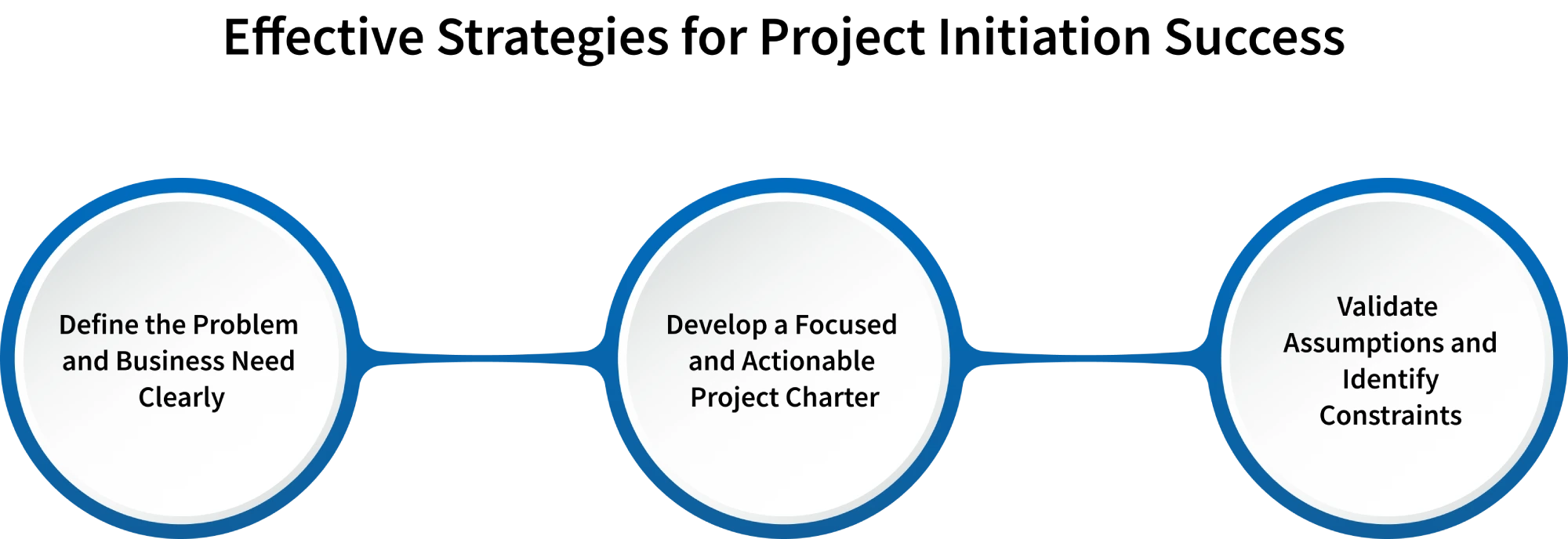
Define the Problem and Business Need Clearly
Begin by figuring out the main reason for this project. What problem are you trying to fix, or what chance are you trying to take? If the reason isn’t clear, the rest of the work will be harder. A good project start means having a clear purpose. When your goals focus on real business needs, you’re not just doing tasks, you’re making a difference.
Engage Key Stakeholders from the Start
Don’t wait to include people until later. At the start of the project, you need input from everyone involved, impacted, or who makes decisions. This saves time and helps prevent surprises. Ask questions, listen to different views, and make sure everyone agrees early on. This way, you’ll face fewer problems and get better support as the project moves forward.
Develop a Focused and Actionable Project Charter
Your project charter is more than just a business document. It’s your plan to follow. Keep it brief, clear, and to the point. Include the goals, what’s included, the schedule, who is involved, and any limits. A good project charter helps organise the project start and makes sure everyone understands the plan. If you skip it or leave it unclear, things can quickly go off track.
Validate Assumptions and Identify Constraints
Many problems in a project come from guesses made at the start. Before you begin planning, take a moment to review your assumptions. Consider how much time, money, resources, and technology the project will need. What might cause issues? Use the project initiation stage to point out anything unclear. When you understand what you have and what you don’t, you can make better decisions throughout the project.
What Are the Common Mistakes to Avoid During Project Initiation?
Starting a project without a clear beginning is a huge mistake. The project initiation phase sets the foundation for the rest of the project. If you skip it or rush through, you will end up with unclear goals, lost time, and expensive fixes later. These are the common mistakes you need to avoid to keep your project initiation on the right path.
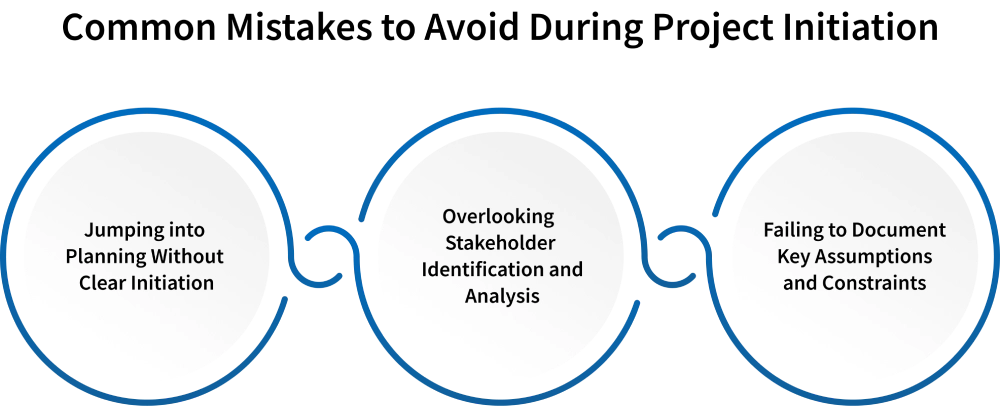
Jumping into Planning Without Clear Initiation
If you start planning the project before you officially start, you’re likely to run into problems later. If you start planning the project clearly, you’re likely to run into problems later. The project initiation phase helps you figure out what the project is for, why it matters, and what you want to achieve. If you skip this step, your plan might not match the real needs, and that can lead to confusion and delays. Before you move ahead, make sure the purpose, goals, and limits of the project are clear.
Overlooking Stakeholder Identification and Analysis
If you don’t know who should be involved or kept in the loop, it can cause delays and problems later. In the project initiation phase, it’s important to find out who the stakeholders are and what role each person plays. If you miss this step, you might leave out key people, and decisions could be made without the right input. This can lead team to confusion, disagreements, or important details being missed. So, make sure you sort this out early to keep things clear and on track.
Failing to Document Key Assumptions and Constraints
Every project has some limits and things you’re not fully sure about. If you don’t note down these assumptions and constraints during the project initiation phase, unexpected issues can mess up your schedule or budget. Writing them down early helps you spot possible risks and plan better. If the team works with wrong ideas because nothing was written clearly, fixing things later becomes harder. So, list everything clearly to keep the project practical and under control.
How BIXO Helps You Move From Project Initiation to Execution
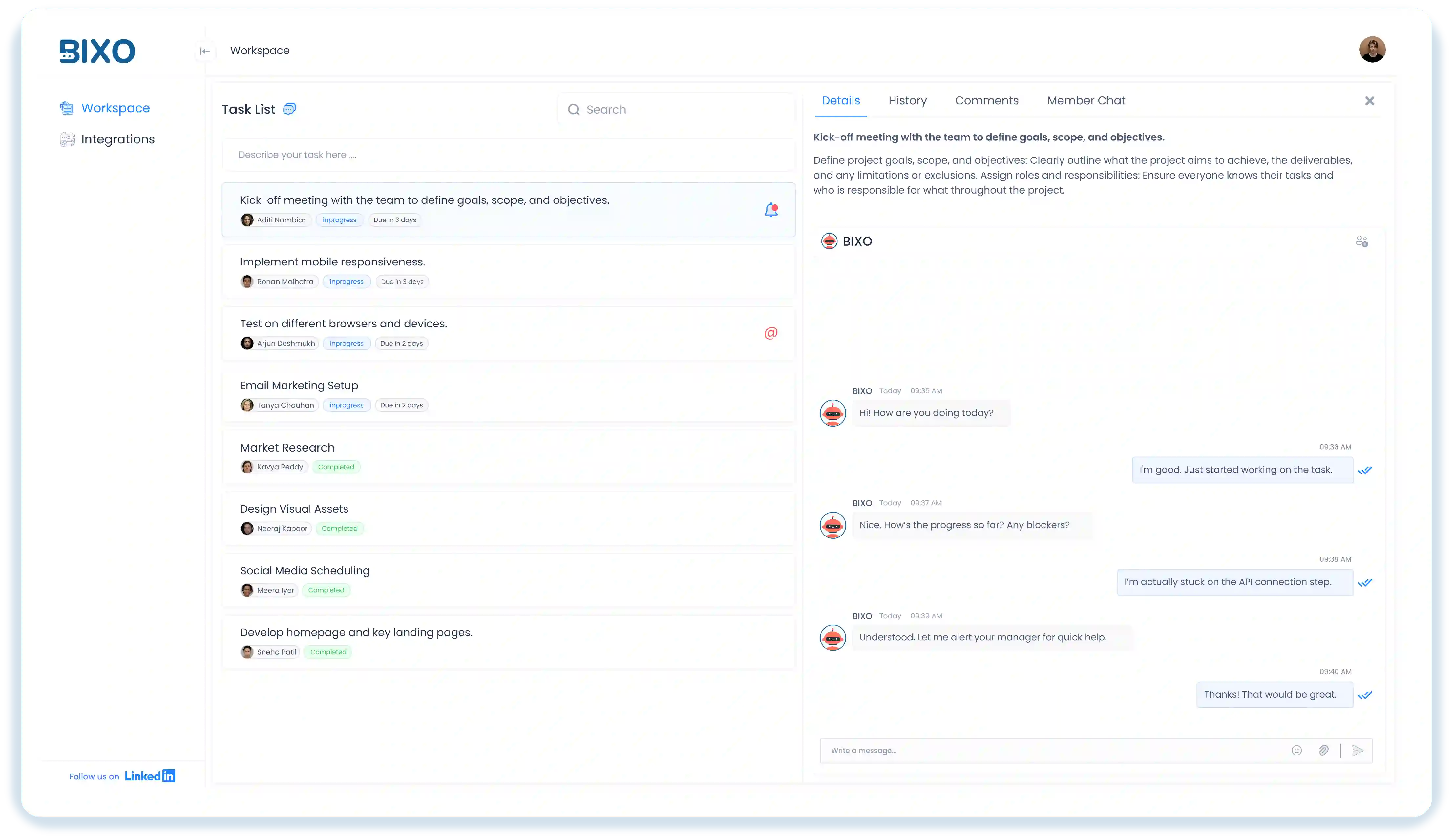
Once you finish the project initiation and set clear goals, timelines, and roles, BIXO AI manager takes over to keep things running. You don’t need to keep asking your team for updates or hold daily meetings just to stay informed. BIXO checks in with everyone, tracks real progress, and gives you updates without you needing to follow up. It makes sure the work keeps moving smoothly after the project initiation phase.
BIXO acts like your AI task manager. It keeps an eye on deadlines, reminds people to finish their work, and alerts you if something’s not right. You can spend more time planning and less time chasing updates. Whether you're handling one project or managing work for a big team, BIXO helps you stay on top of everything.
Conclusion
A well-executed project initiation phase is fundamental to project success. When you set clear goals, spot risks early, and bring in the right people from the beginning, you build a strong foundation. This helps you avoid confusion and wasted time later. A good start keeps the team focused and makes it easier to handle problems as the project moves forward. Using AI assistants like BIXO , managers can simplify this process by automating follow-ups, collecting updates, and keeping everyone aligned from day one.
FAQs
The goal is to figure out what the project is about, why it matters, and if it’s possible to do. It helps everyone understand the work, stay on the same page, and avoid problems later.
When you involve the right people early, you get their ideas, approvals, and concerns before problems show up. It helps avoid surprises, keeps everyone on board, and makes sure the project meets the right needs.
A project charter should mention what the project is for, what work it covers, the main goals, how long it might take, who’s involved, and any limits. It gives a clear starting point for planning.
Some common mistakes are skipping the first steps, not involving the right people, and not writing down guesses or limits. These can lead to confusion, missed risks, and problems that slow things down or cost more later.
Get a demo of BIXO
Recommended Blogs
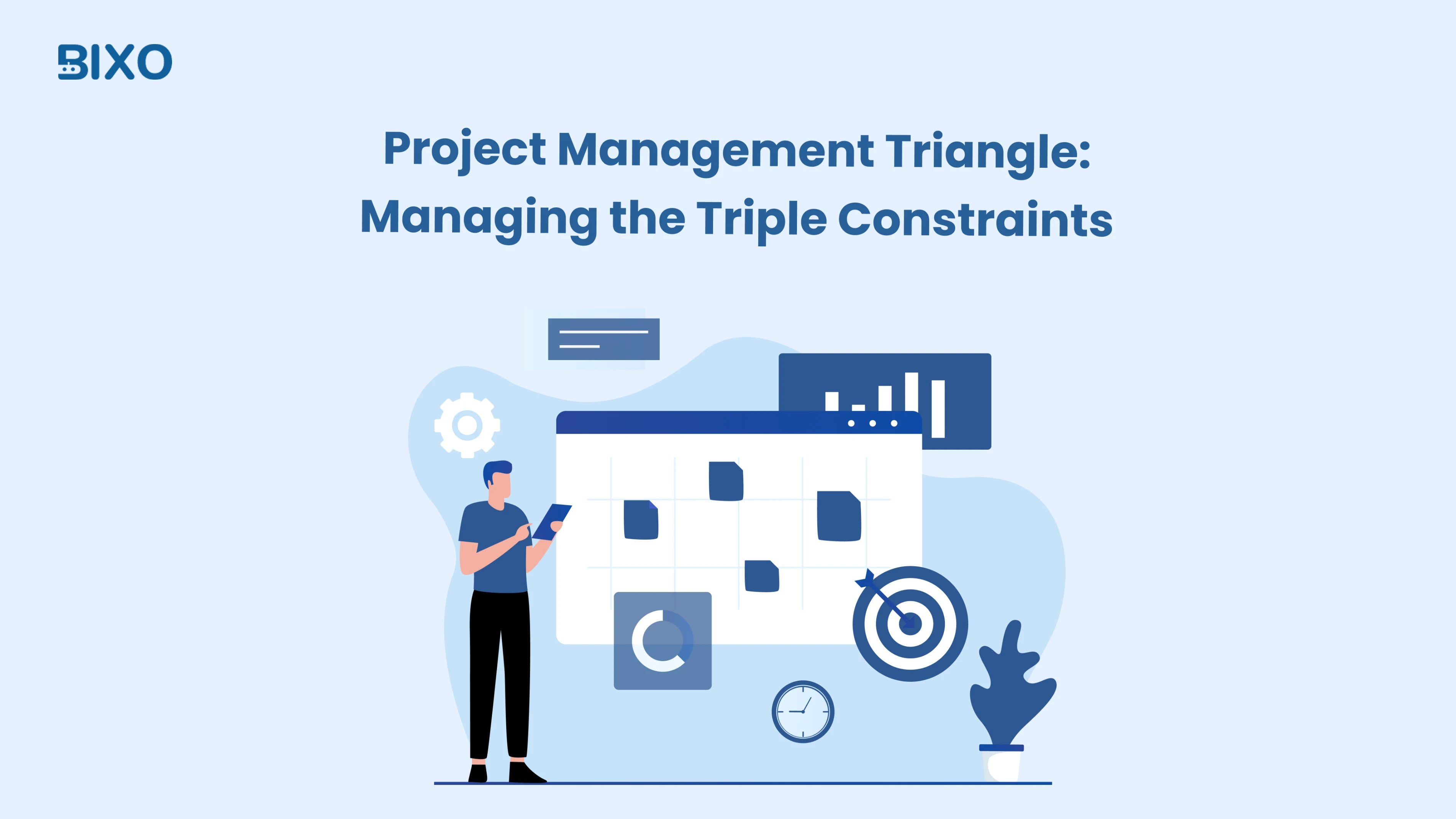
Project Management Triangle: Managing the Triple Constraints
Master the project management triangle by balancing scope, cost, and time with simple strategies that drive successful outcomes every time.
 Jahnavi Chintakrindhi |
Jahnavi Chintakrindhi |
 Oct 13, 2025
Oct 13, 2025

